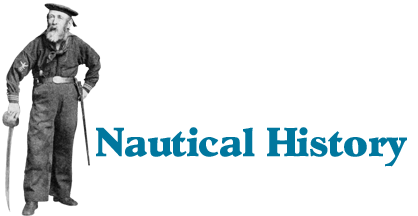

The U.S. Coast Survey
By Jim Mathews
In 1807, President Thomas Jefferson invited Ferdinand R. Hassler, a young
Swiss political refugee, to begin the scientific survey of the ill-charted U.S.
Coast. Hassler was a colorful, and
tempestuous character who devoted his life in America to this work. His unusual charm won the friendship of
Jefferson and others, but his high-handed methods outraged Congress and the
old-line Naval Officers, who insisted that they could handle the task better
than he.
The Coast Survey effort was officially begun in 1816, within the Treasury
Department, under Hassler's direction. The
Coastal Survey, thus predated the establishment of the Topographical Engineer's
Bureau, and this was the first contact that the "Topogs" had with that
organization. In later years the
Topographical Engineers would undertake much construction for the Treasury
Department. Colonel Abert, who
later commanded the Corps of Topographical Engineers, and who was at that time a
Major, worked for the Coast Survey for two years. In 1818, after a temporary period of operation under the
Armed Services, a lack of funds forced the suspension of work. This lack of Congressional funding
together with naval jealousy held up work on the project until 1832.
In 1831, Colonel Abert had secured the independence of the Topographical
Bureau, and at that time expressed to Congress the need for a coastal survey. According to Abert, the Topographical
Engineers were the only service with the sufficient technical knowledge and the
requisite discipline to do the job. Further
Abert claimed that the survey completed under the auspices of the Topographical
Engineers would have extreme value, not only for the military services but for
the interests of Commerce and Science as well.
Lastly, Abert exhibited an eagerness to accomplish the work. Unfortunately, for all concerned,
Congress refused to add the requested coastal survey work to the missions of the
Topographical Bureau.
In 1832, finances were again available and the appropriations for the
coastal survey were resumed. It's
first activity was in the area of Long Island, NY. In 1836, at the Treasury Department's
request, Colonel Abert detailed Captain William H. Swift of the "Topogs"
to the project. Unfortunately, however, due to unusual organization and the
continued pressure of the Navy to conduct this effort, it was not until the
reorganization of the Coast Survey itself, in 1843, that the Topographical
Engineers began to take a much larger part in the survey work.
The law of 1843 determined a board of officers to provide, design and
develop a plan for the project in an effort to move the project along and to
streamline it's efforts. This board
was to consist of four "from among the principle officers" of the
following groups:
--Corps of Topographical Engineers;
--Superintendent of the Coast Survey and his two main assistants;
--Two Naval Officers then in charge of the Hydrographical Parties.
The "Topogs" were then given the detailed implementation of the
topographical portions of the final plan. From
then until the breakout of the Civil War, one "Topog" officer was
always with the survey in some capacity or appellation.
The first coastal survey chart was produced in 1844 after the death of
Hassler. This work consisted of a
chart of New York Harbor in six sheets at a scale of 1:30,000. This magnificent work depicted a newly
discovered and very important deep water channel into the harbor. This channel was named after it's
surveyor Lt. Thomas R. Gedney of the Navy. The specific importance of the Gedney
Channel Survey, had a great impact on the Merchants and Shipowners alike in New
York, and probably saved the survey from further delay.
The Coast Survey itself had only a small staff and relied on the Army and
the Navy personnel to accomplish much of it's surveying in the antebellum
period. Several officers represented the "Topogs" with the survey,
including Joseph E. Johnson, Thomas Lee, Thomas Jefferson Cram, and James
Simpson. For almost a decade, 1833
to 1834 and 1836 to 1843, Captain Swift was the Coast Survey's dispersing
officer. Captain Humphreys served
as Assistant In Charge from 1844 to 1850. Those
officers who worked with the survey added their surveying and exploration
background and skills to the project while gaining experience with instruments
and equipment peculiar to the coastal survey.
Coast Survey became the U.S. Coast and Geodetic Survey thirty-four years
later in 1878.
References:
United States Coastal Charts (1783-1861)
The Nation Builders
Vanguard Of Expansion (Army Engineers in the Trans-Mississippi West--1819
- 1879)